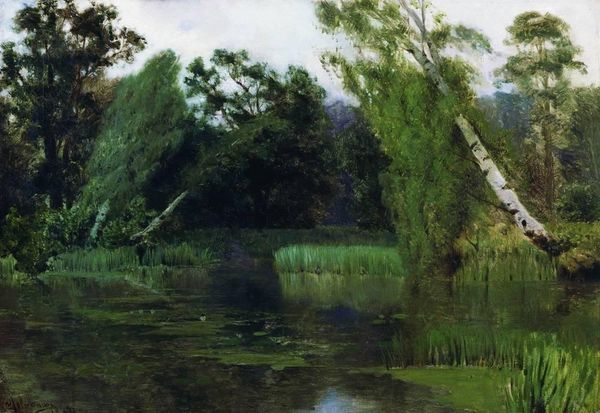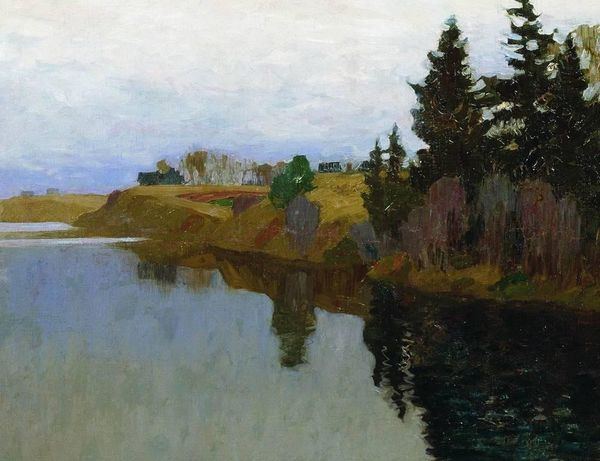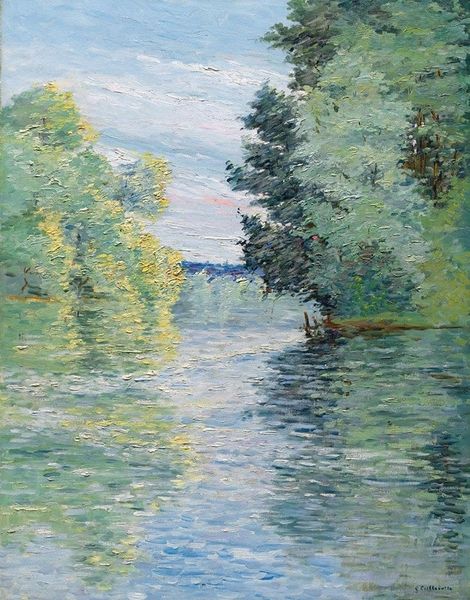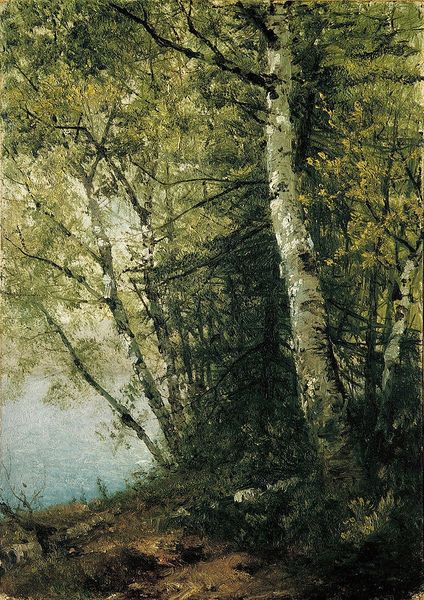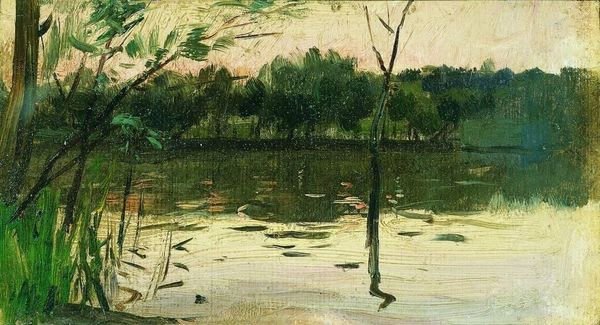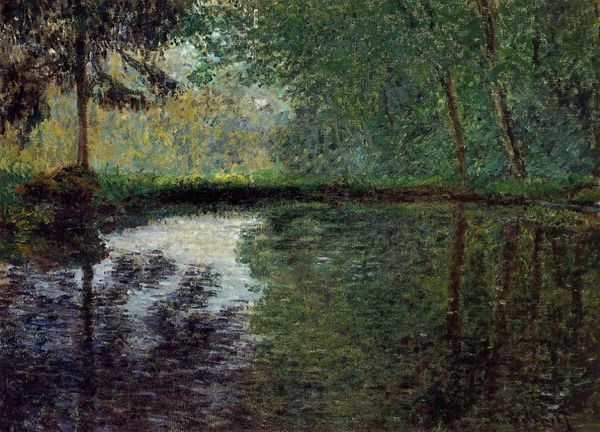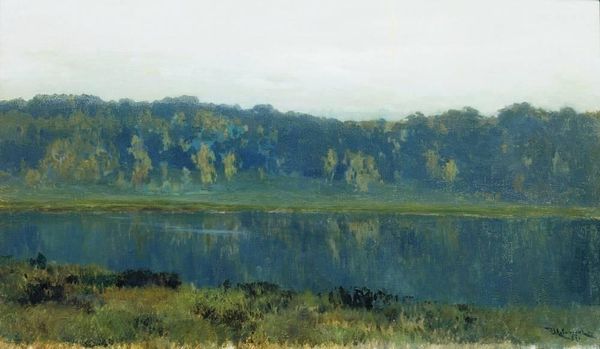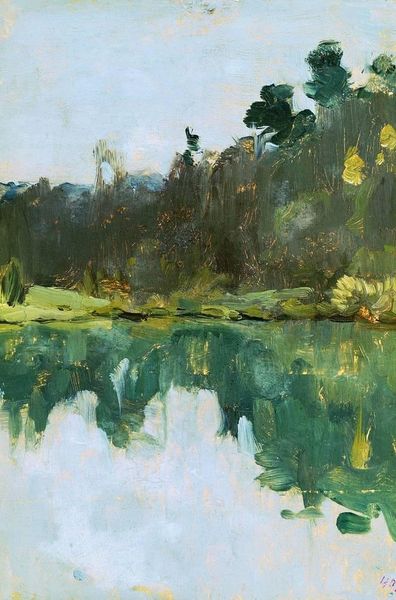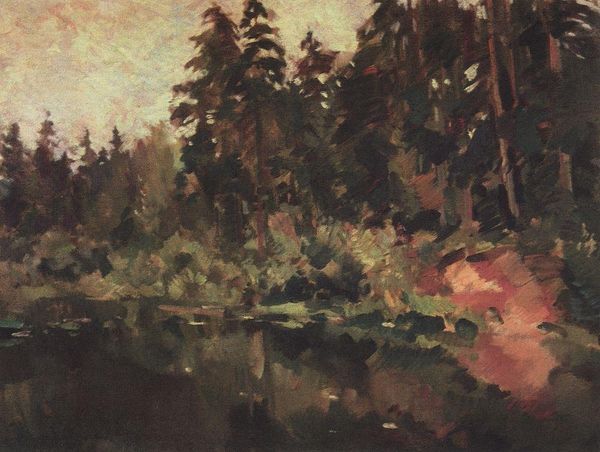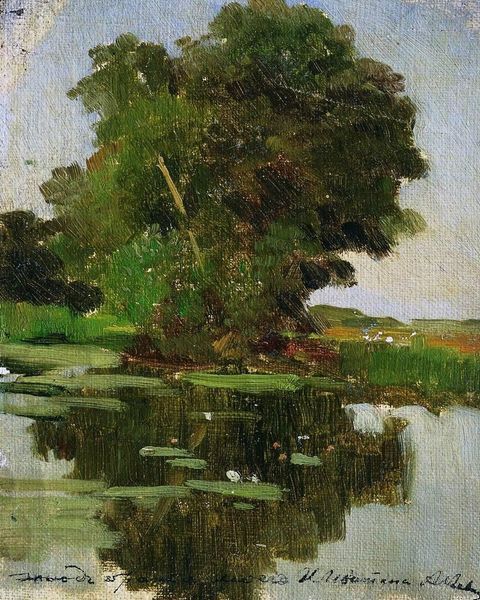
Copyright: Public domain
J. E. H. MacDonald made this oil painting on canvas of the Maganatawan River, Ontario, sometime in the early twentieth century. Oil paint is made through an involved process, transforming pigment into a malleable paste using linseed or walnut oil. Here, MacDonald's impasto technique is evident in the painting’s textured surface, where the buildup of paint creates dimension. The artist applies thick daubs of paint to capture the scene, manipulating this material to convey light and shadow. Notice the energetic brushstrokes in the trees, reflecting the artist's active engagement with the landscape, and consider the labor involved in preparing and applying the paint to achieve this effect. This painting, therefore, invites us to appreciate the artistry and physical work inherent in MacDonald's practice, connecting the aesthetic and the material dimensions of his art. It challenges traditional views by emphasizing the critical role of materials and making in our understanding.
